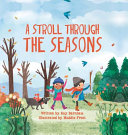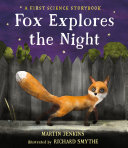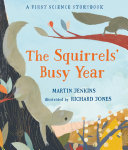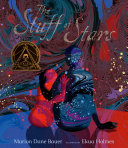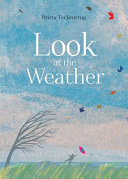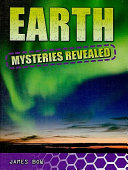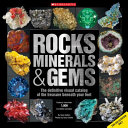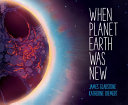Listed below are selected teacher resources, picture books, and non-fiction related to earth sciences.
Teacher Resources
 Land, Water, and Sky for Grades K-2: An Inquiry Approach
Land, Water, and Sky for Grades K-2: An Inquiry Approach
by Jennifer Lawson
Grades: K-2
This book covers how to teach about land, water, and sky in alignment with the current BC curriculum. Uses the Know-Do-Understand model, First Peoples Principles of Learning, and an inquiry approach. Part of the Hands-on Science series.
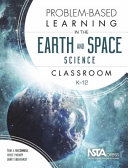 Problem-based learning in the earth and space science classroom
Problem-based learning in the earth and space science classroom
by Tom J. McConnell, Joyce Parker, and Janet Eberhardt
Grades: K-12
This resource presents tips and techniques for problem-based learning in four content areas: Earth’s landforms and water, the rock cycle and plate tectonics, weather, and astronomy.
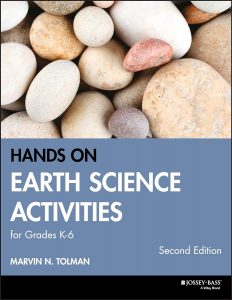 Hands-on earth science activities for grades K-6
Hands-on earth science activities for grades K-6
by Marvin N. Tolman
Grades: K-6
This book’s activities follow the discovery/inquiry approach and encourage students to analyze, synthesize, and infer based on their own hands-on experiences. Topics covered include air, water, weather, the earth, ecology, above the earth, beyond the earth, and current electricity.
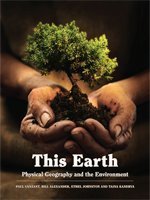 This earth: Physical geography and the environment
This earth: Physical geography and the environment
by Paul Vazant and others
Grades: 10-12
A case-driven text that focuses on physical geography and human interaction and covers the origin of Earth, continental shifts, water and air pollution and human impacts, and taking responsibility for the planet. Also includes teaching notes, lesson plans, and assessment rubrics.
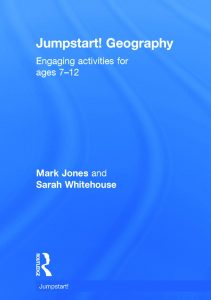 Jumpstart! Geography: Engaging activities for ages 7-12
Jumpstart! Geography: Engaging activities for ages 7-12
by Mark Jones and Sarah Whitehouse
Grades: 2-6
This collection of simple to use and fun activities will jumpstart pupils’ understanding of the geographical skills of inquiry, outdoor learning, understanding graphic representations, and communication. Pupils will develop their knowledge and understanding of people, places and issues through being encouraged to ‘think geographically’ about the world they live in. Includes activities related to continents and oceans, and physical features such as rivers, forests, deserts, and coastlines. (E-book only)
Picture Books
written by Kay Barnham, illustrated by Maddie Frost
Grades: K-3
Follow the changes that each season brings: from spring blossoms, to summer sunshine, to autumn leaves, to winter snow.
written by Martin Jenkins, illustrated by Richard Smythe
Grades: 1-3
Follow Fox as she makes her way through city streets and learns about sunlight, moonlight, electric light, and darkness
written by Martin Jenkins, illustrated by Richard Jones
Grades: 1-4
In the winter, when it’s cold, the squirrels dig up acorns to eat. But what will they eat in the spring, when it’s warm again?
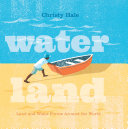 Water land: Land and water forms around the world
Water land: Land and water forms around the world
written and illustrated by Christy Hale
Grades: 3-5
Die-cut pages identify and contrast types of water bodies and their corresponding land masses to help young readers understand how connected the earth and the water really are.
written by Marion Dane Bauer, illustrated by Ekua Holmes
Grades: K-3
Before the universe was formed, before time and space existed, there was nothing. But then … BANG! Stars caught fire and burned so long that they exploded, flinging stardust everywhere. And the ash of those stars turned into planets, into our Earth, and into us.
Non-Fiction
by Britta Teckentrup, translated by Shelley Tanaka
Grades: K-6
Through four chapters–sun, rain, ice and snow, and extreme weather–this book explores different weather phenomena, from rainbows and sunsets to clouds, frost, and rainstorms.
by James Bow
Grades: 3-6
This book explains how our planet is put together and answers the questions to mysteries such as: why is the only life we know of found on Earth; how did this warm and wet planet form from a cloud of ice and dust; was the Moon once a part of Earth’s rocks; why is it night all winter in the Arctic; why are sunsets orange; and was there really an ancient city that was destroyed by a volcano and tsunami? Part of the Mysteries revealed series.
 Earth’s landforms and bodies of water
Earth’s landforms and bodies of water
by Natalie Hyde
Grades: 1-3
Explains how Earth is covered by landforms and bodies of water, how they develop, and why they change. Covers landforms such as mountains, valleys, and sand dunes, as well as waterways such as oceans, rivers, and ponds. Part of the Earth’s processes close-up series.
 Experiments in earth science and weather with toys and everyday stuff
Experiments in earth science and weather with toys and everyday stuff
by Emily Sohn
Grades: K-3
Engaging experiments using simple toys and everyday stuff teach curious young minds all about earth science. Readers can take an up-close look at how tornadoes develop, why wind is sometimes cold, how the water cycle works, and much more.
by Jon Richards and Ed Simkins
Grades: 1-6
From tectonic plates and meteorites to erupting volcanoes, the atmosphere, and the world’s longest rivers, this book explores planet Earth using a wide variety of icons, graphics, and pictograms.
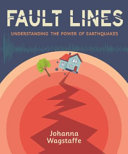 Fault lines: Understanding the power of earthquakes
Fault lines: Understanding the power of earthquakes
by Johanna Wagstaffe
Grades: 4-8
Earthquakes are a terrifying yet fascinating force of nature. Seismologist Johanna Wagstaffe takes you through her own journey of understanding the earth beneath our feet. Along the way you’ll learn the science behind what makes the earth rumble and hear from kids around the world who have experienced the wonder, and terror, of an earthquake.
by Sean Callery and Miranda Smith, illustrated by Gary Ombler
Grades: 3-7
Readers will learn about hundreds of rocks, minerals, crystals, and gems that were forged by the most powerful events in prehistory. Explore what specimens look like and how they’re used today. Find out all about star stones and cat’s eyes, megagems, and phantom quartz. Discover which rocks fluoresce, which mineral once poisoned an emperor, and which gems are the rarest in the world.
written by James Gladstone, illustrated by Katherine Diemert
Grades: K-3
It has taken billions of years for Earth to become the planet it is today. This book looks back to the very beginning, giving a poetic yet scientific overview of how the planet has changed over time: from hot lava to the formation of oceans to the evolution of living things in water and on land.
 Water wow! An infographic exploration
Water wow! An infographic exploration
written by Antonia Bayard and Paula Ayer, illustrated by Belle Wuthrich
Grades: 4-7
Where did water come from before it got to Earth? Why is the water you drink the same stuff that was around when dinosaurs were alive? If water can’t be created or destroyed, how can we run out? How does climate change affect water and vice versa? How are water access and girls’ education worldwide connected? Find out the answers to these and many more questions through infographics.
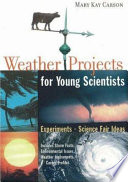 Weather projects for young scientists: Experiments and science fair ideas
Weather projects for young scientists: Experiments and science fair ideas
by Mary Kay Carson
Grades: 4-7
From the everyday phenomena of wind and clouds to the awesome, destructive power of lightning, tornadoes, and hurricanes, children can explore weather in detail with this science activity book. More than 40 weather projects are included, such as building a model of the water cycle, creating a tornado in a bottle, calculating dew point, reading a weather map, building weather-measuring instruments, and more.
Finding More Resources
To find more resources in this area, try the following:
- Search using the General tab on the UBC Library website to look for material in all UBC Library branches.
- Search using “Search Education Resources” box in the left hand bar on the Education Library website to limit your results to materials in the Education Library.
- Use specific search terms to narrow your results, such as “earth science”, “earth (planet) — juvenile literature”, “physical geography”, “weather”, or “science–study and teaching.
- To find lesson plans, include “lesson plans”, “lesson planning”, or “activity programs” in your search terms.
For more help with searching, please visit the Library Service Desk or e-mail ed.lib@ubc.ca.
